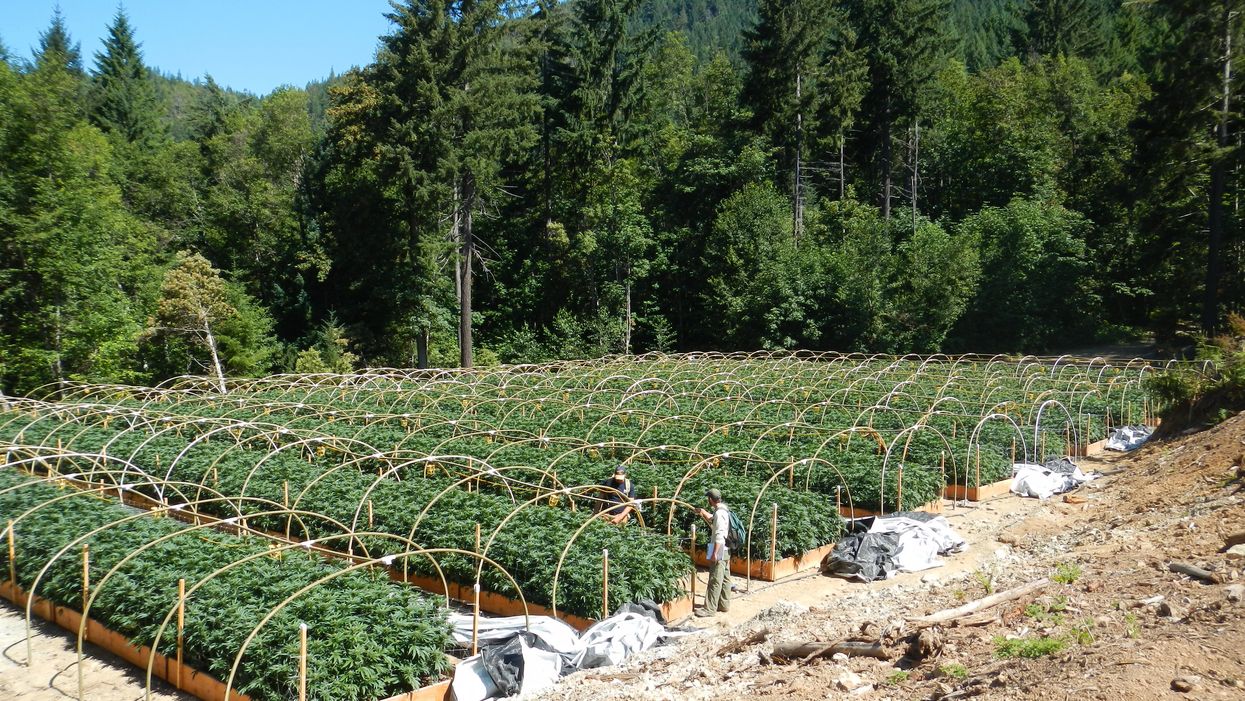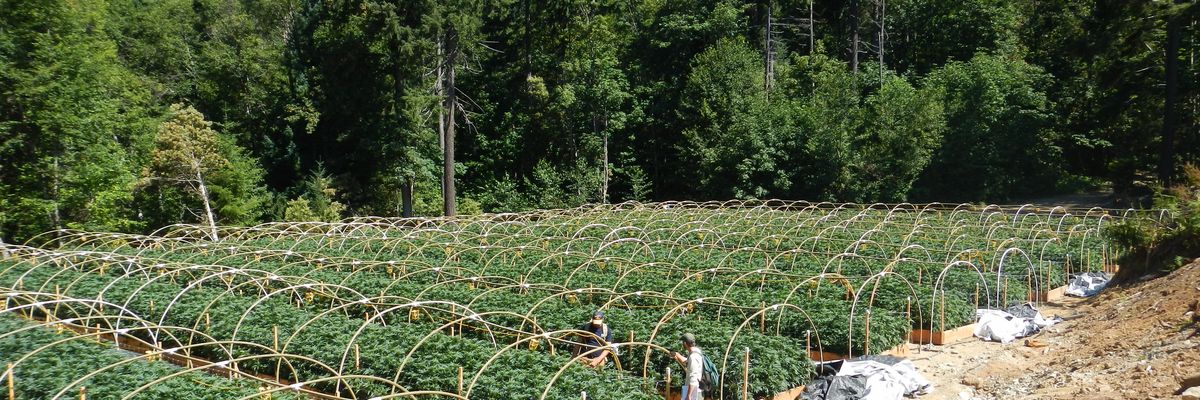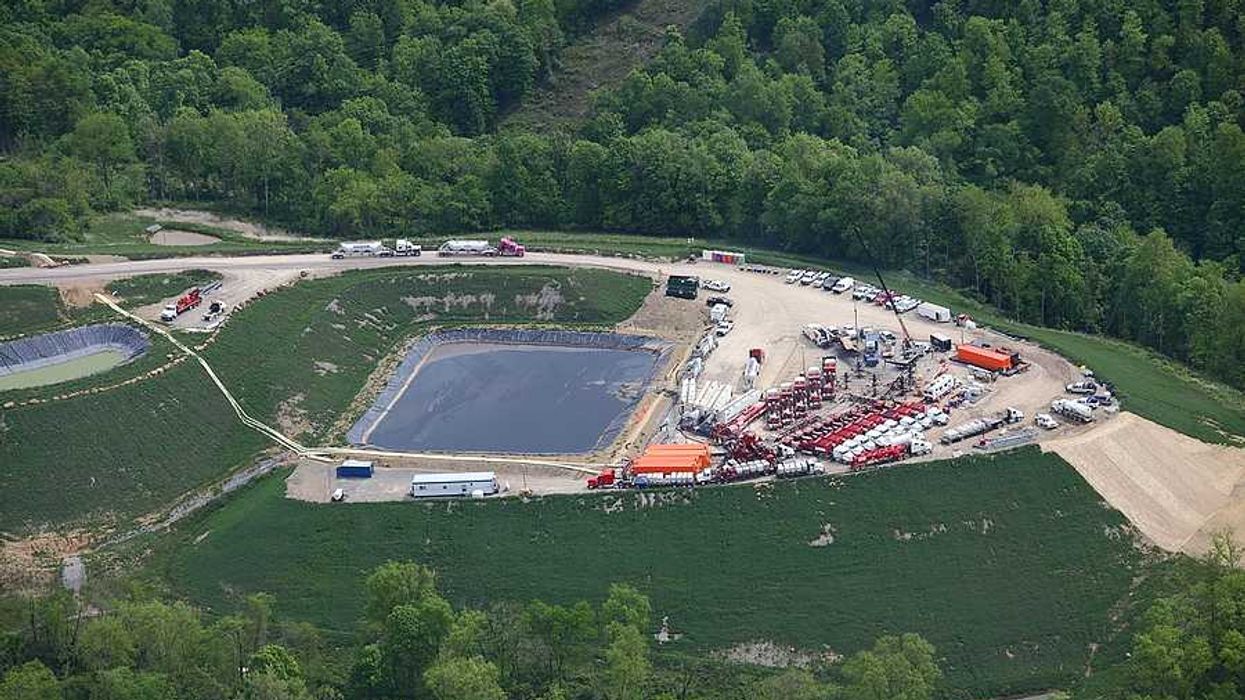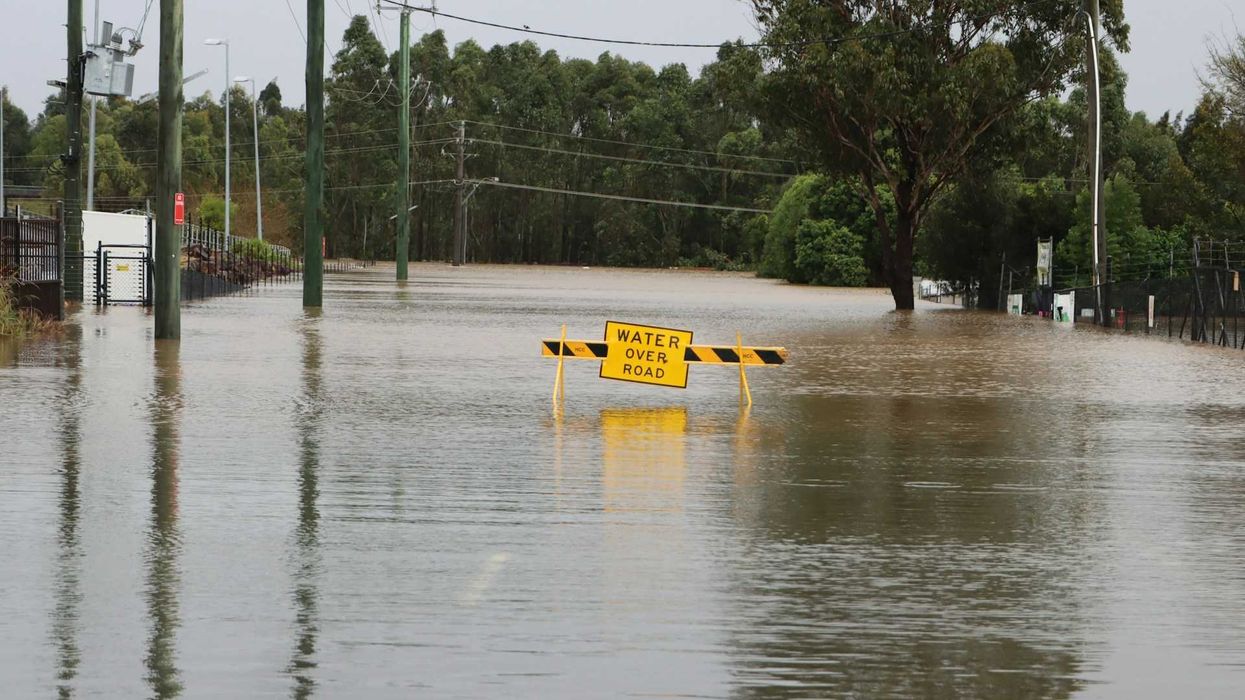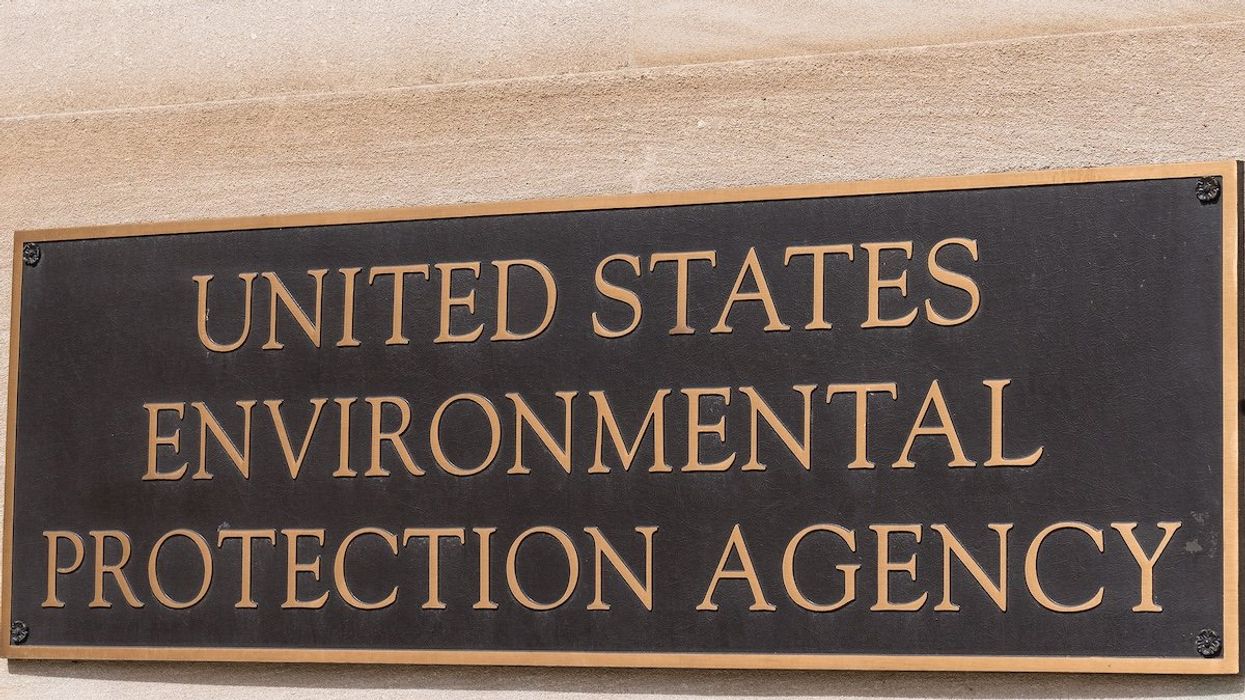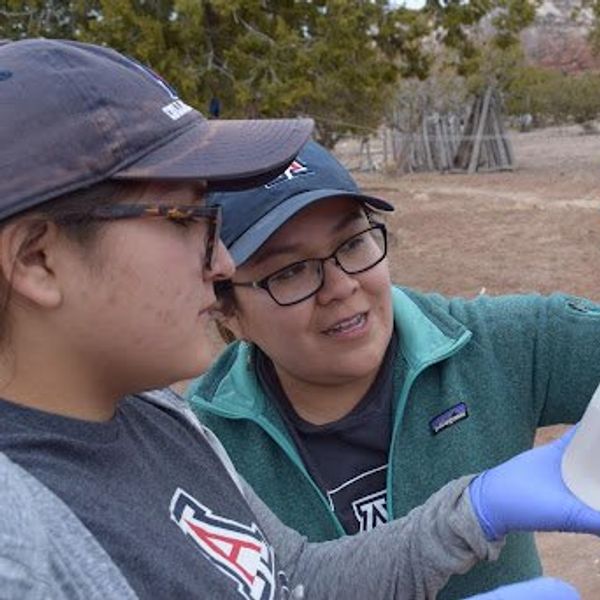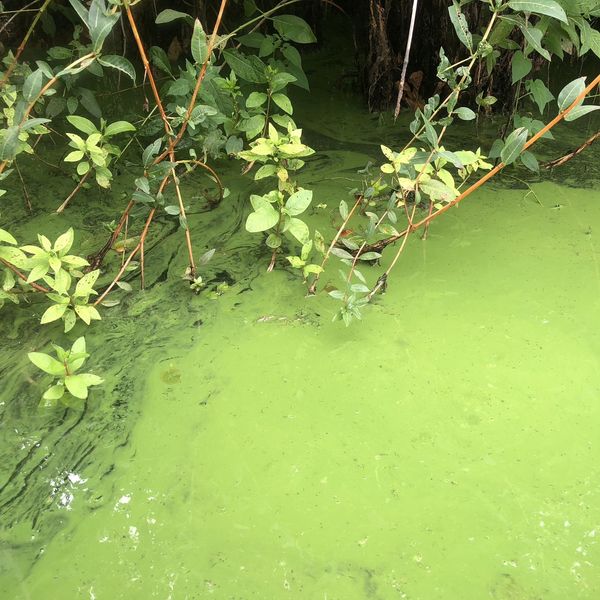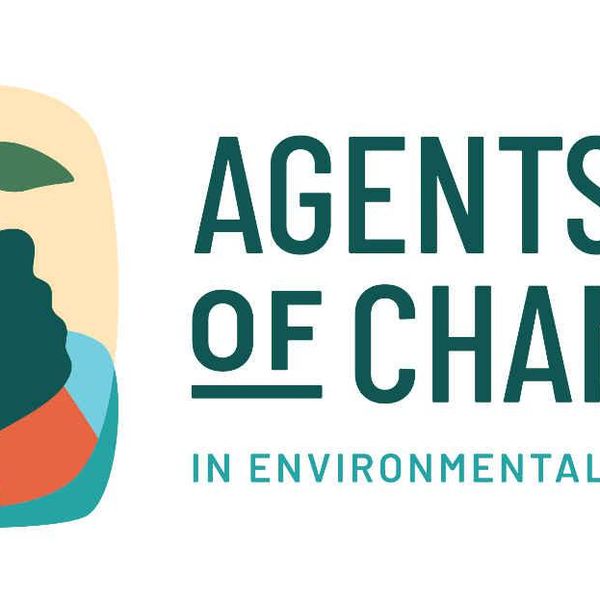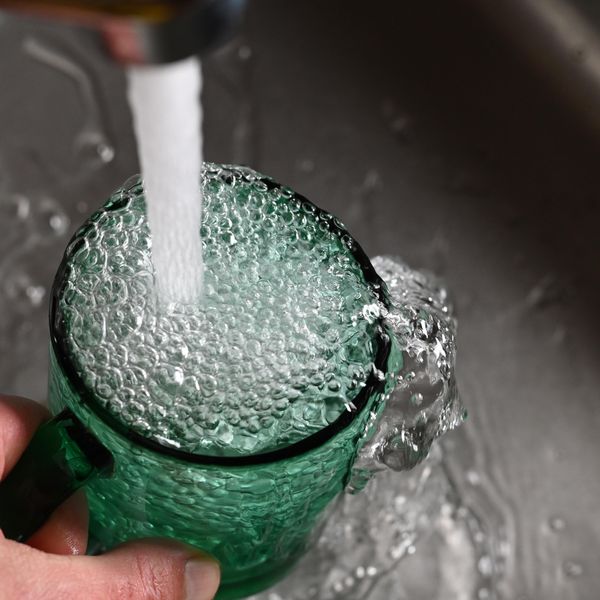HUMBOLDT COUNTY, Calif.—In early September, the run of Supply Creek near Ken Norton's office on the Hoopa Valley Reservation has gone dry.
The boulders and logs placed to create salmon and trout habitat lie bare under the sun.
Norton, director of the Hoopa Valley Tribal Environmental Protection Agency and a member of the tribe, is worried about the stream's future. Under California's new cannabis regulatory system, 266 marijuana farmers are applying for permits to grow on the Hoopa Valley Tribe's traditional lands—some of which are now privately held and lie outside reservation boundaries.
More than 20 of the grows are in Supply Creek's steep headwaters. After years of habitat restoration work, Norton is concerned that cannabis farms may lower flows and kill off young fish.
"From the tribe's perspective, within our aboriginal territory, there are 266 applications, and the county takes each of these applications individually," Norton told EHN. "They do not look at the cumulative impact on the area."
Salmon and trout have traditionally been a staple food for the Hoopa and other northwestern California tribes. Coho, chinook and steelhead populations are now at a fraction of their numbers before white settlement.
During the region's timber boom, which began soon after white settlement in the 1850s and began to fade in the 1960s, clear-cutting and logging road construction caused the loss of salmon and trout breeding and rearing habitats in the streams of the Emerald Triangle— the pot aficionado's name for Humboldt, Mendocino and Trinity Counties, now famous for producing high quality cannabis rather than fish. In recent years, marijuana farmers in some watersheds have diverted so much water that long stretches of streams have run dry.
The environmental impacts of industrial cannabis farming in the Emerald Triangle are unique. In Colorado, the first state to legalize recreational marijuana, the vast majority of legal cannabis farmers grow indoors in the Denver area, using the metropolitan water supply and wastewater system.
In Washington state, growers have set up on traditional agricultural lands. In Oregon, land use laws have kept most growers out of steep timberlands where their farms might affect threatened salmon.
Today, about 60 percent of the marijuana consumed in the US is grown in California, most of it in the rugged, forested mountains of the Emerald Triangle. Clandestine marijuana farms (or grows) have existed here since the 1970s, and Norton has been aware of grow sites in and around the Hoopa Valley reservation for decades.
In the early days, these pot farms were small and scattered. But in recent years the industry has intensified. A wave of newcomers planted larger farms, using greenhouses and artificial lights to extend the growing season and yield up to three marijuana crops in a single year. The cannabis boom has polluted waters with fertilizers, fuels and pesticides, triggered erosion that buries the rocky habitats where salmon and trout spawn and grow, and drained streams of water in the dry season.
"The problems we have are not necessarily those of growing weed," Scott Greacen, Conservation Director of Friends of the Eel River, told EHN. "But of growing weed in this place where we have both a really vulnerable physical geography and endangered salmon and steelhead to lose."
The Eel River is vital habitat for threatened runs, and parts of the watershed, particularly the tributaries of the South Fork, are crowded with grow sites.
Old roads and new erosion
Cannabis is a thirsty plant, and to keep a crop growing during the summer dry season, growers divert springs and streams for irrigation. As the industry expanded, water diversions caused some streams to run dry during the summer—posing a deadly threat to sensitive aquatic species that include the southern torrent salamander and coastal giant salamander, in addition to salmon and trout.
Using high-resolution satellite imagery, Van Butsic of the Cannabis Research Center at the University of California at Berkeley has tracked the Green Rush—a dramatic increase in the number and size of Emerald Triangle cannabis farms that took place in the years between the passage of Proposition 215, which legalized medical marijuana in 1996, and Proposition 64, which passed in 2016, legalizing recreational cannabis in California.
In a paper published in Environmental Research Letters in 2018, he documented an 80 percent rise in the number of grow sites and a 91 percent rise in the extent of land used for marijuana cultivation in the remote watersheds of Humboldt and Mendocino counties from 2012-2016. His more recent data shows that the trend of rapid expansion continued through 2018, the year when the law governing legal recreational cannabis took effect in California.
In the logging era, erosion from clear-cutting, road-building and poor road maintenance sent sediments flowing off the mountainsides and into creeks, drowning the rocky habitats where salmon and trout spawn and young fish grow. During the Green Rush, cannabis farmers reopened old logging roads, and bulldozed new ones, to access their grow sites.
"I've seen roads built right up stream channels," Scott Bauer of the California Department of Fish and Wildlife (CDFW), told EHN, "like what we saw in the early timber years."
Much of the damage from pot farming, said Greacen, is tied to sediment eroding from roads and particularly from inadequate drainage culverts. "For a lot of people, that's hard to understand because the Emerald Triangle is a unique place, incredibly rugged and incredibly erosive," he said.
In a 2015 study, Bauer found that diversions to irrigate cannabis crops took all the water flowing in some streams during the summer dry season. Reduced flows lead to higher water temperatures, and warmer water holds less dissolved oxygen.
Juvenile salmon and trout need clean, cold, oxygen-rich water, and low flow conditions stunt their growth and can dramatically lower their chances of survival. When creeks lose so much water that they're reduced to a series of disconnected pools, the young fish trapped there are doomed.
“Why are we growing weed in the remote headwaters of wild places?”
John Casali, a second-generation cannabis farmer in Humboldt County, built rainwater catchment ponds to water his crop five years ago, before regulations required it—because he felt it was the right thing to do. "My property has spawning tributaries on both sides," he told EHN, "and it's a very sensitive watershed." To satisfy CDFW rules, he had to line his drainage ditches with rock and replace some old road culverts. "My property was relatively easy compared to most, but it still cost in the six figures to get permitted."
As the agencies grappled with the new and unexplored issues of regulating cannabis, they altered their rules, making it necessary for early permit applicants like Casali to change their farms more than once. "A lot of people have seen early on how much it cost us, and a lot of people just can't afford it," said Casali. "That's unfortunate—and it means [growers will] have to make a choice."
Selling cannabis on the black market, for export to states where it's still illegal, can yield a higher profit—but unpermitted growers face stiff fines if they're caught. It's difficult to track what's happening in the remote backwoods, so law enforcement agencies use aerial imagery to find illegal grow sites.
"We've been doing a lot of enforcement," John Ford, director of Humboldt County's Planning and Building Department, told EHN. "We've cited in the neighborhood of 900 sites. Not all of those have stopped, but most have. We hear anecdotal comments from people in other counties that growers have left Humboldt because they don't want to deal with our enforcement efforts."
Butsic, who tracks the Emerald Triangle's cannabis industry using satellite imagery, said it's unclear how much legalization changed things on the ground so far. "The majority of farms that we see in Humboldt and Mendocino are not permitted by the state. They can't sell on the legal recreational market, and are exporting to another state or selling on the black market in California." He believes enforcement efforts will cause these illegal farms to fade away—but the process may take years.
Legal operations should cause much less environmental damage than rogue ones. Still, some question whether commercial cannabis makes sense here anymore.
"Why are we even emphasizing commercial cannabis cultivation in places where it came not because it was the best place to grow weed, but because it was the best place to grow weed in hiding?" Greacen asked. "Why are we growing weed in the remote headwaters of wild places, when there's lots of opportunity to do it in places where it has almost no impact at all?"
Since legalization, large commercial cannabis operations have sprung up in the Salinas Valley and in Santa Barbara County—where impacts on salmon and trout are not an issue because those species have already been extirpated there. The cannabis grown there is cheaper than the stuff from the legendary Emerald Triangle.
Storage solutions
California law now requires cannabis farmers to obtain permits from state agencies, including CDFW, the State Water Resources Control Board, and the Cannabis division of the state's Department of Food and Agriculture, known as CalCannabis. Some counties, including Humboldt and Mendocino, also have their own cannabis land use ordinances.
A major goal of regulation is to keep water flowing in streams. CalCannabis requires growers in the Emerald Triangle to store water over the winter, when rains swell the creeks, and to cease diverting water in the dry season.
This strategy of forbearing from water diversions during the summer was first tested in a volunteer effort organized by the nonprofit Sanctuary Forest, Inc. in the headwaters of the Mattole River. Sanctuary Forest began funding the installation of water storage tanks in 2007, and the program has now built 1.8 million gallons of storage and signed legally binding forbearance agreements with 30 landowners. The effort has increased flows during the driest time of year and improved fish habitat. Forbearance has become a critical part of county and state efforts to manage water use by the cannabis industry.
"People are really moving in the direction of storing water, because they have to," said Bauer. "This year we've had hundreds and hundreds of permit applications come into our office. An awful lot of ponds are being built to store winter flows, and people are getting large tanks."
Repeating past mistakes
Standing at the edge of Supply Creek's dry streambed, Norton explains his worry that intensified cannabis farming will repeat the mistakes and problems of the timber industry. Under California's forestry law, regulators evaluated each planned timber harvest individually, and failed to address the cumulative impacts of multiple logging operations in a single watershed—impacts that often proved devastating to salmon and other aquatic creatures.
When the tribe realized how many cannabis farms were clustered in Supply Creek's headwaters, they sent a letter of protest to Ford at the Humboldt County Planning and Building Department.
In response, Ford partnered with the tribe and Supply Creek growers to gather baseline data on water quality. All the permit applicants in the area have been operating cannabis grows for some time, so the data will reflect existing impacts.
"If the water quality is already degraded, then the effort will be to work in the permits to make sure that's corrected," Ford said. "If the water quality comes back good, then the effort in the permits will be to ensure it stays at that quality."
"The tribe's main concerns are with the cumulative impacts of multiple grow sites, and monitoring environmental compliance in the long term," said Norton.
Cannabis has flourished in the Emerald Triangle because it is a good place to stay invisible. Regulation is kicking in, and there's hope that environmental damage will be contained—but the future is unpredictable, and the survival of northern California's coho and steelhead hang in the balance.
Photos courtesy of CA DFW

